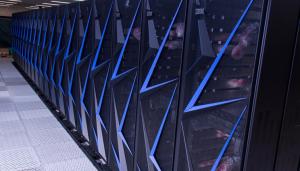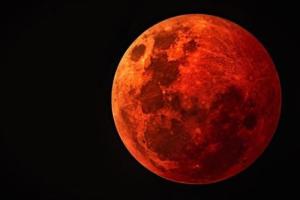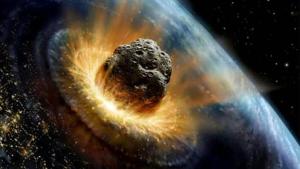LAB REPORT
Science and Technology Making Headlines
Jan. 18, 2019


Patricia Falcone, left, speaks with “She Roars” podcast host Margaret Koval about the importance of college mathematics, early research experience and clear communication. Photo by Liz Fuller-Wright/Princeton University.
Listen to her roar
As deputy director of Science and Technology for Lawrence Livermore National Laboratory, Patricia Falcone, Princeton class of 1974, has been at the forefront of women in science since her pioneering days as a female undergraduate on campus and one of the first Princeton women to major in engineering.
Falcone oversees strategic development of the Lab’s scientific capabilities and is responsible for its collaborative research with academia and the private sector. She joined Livermore after serving in the White House Office of Science and Technology Policy, where she advised on a wide range of national security, science and technology issues.
Drawing on these experiences and others, Falcone recently spoke with “She Roars” podcast host Margaret Koval about the importance of college mathematics, early research experience and clear communication.


New research suggests snowpack loss in the Sierra Nevada will fast-track in the coming decades.
So long snowpack
Snowpack loss in the northern Sierra Nevada will likely accelerate in the coming decades.
Scientists at Lawrence Livermore National Laboratory, Oregon State University and the University of Washington found that natural swings in the sea surface temperature over the Pacific Ocean have resulted in atmospheric circulation changes that have muted the effect of climate change on snow in the Sierras since the 1980s.
Although the amount of water contained in the snowpack has declined over the past century, it has been surprisingly stable since the 1980s, despite 1 degree Celsius of warming over the same period.
The result points to a faster rate of snowpack loss in coming decades, when the impact of global warming is more likely to be amplified, rather than offset, by natural variability.


Senior researchers with the Project on Nuclear Gaming (PONG) write that technological advances for game engines and cloud architectures are fueling the development of next-generation wargames that can increase insights for policymakers.
A signal for nuclear proliferation
Later this month, a team of researchers plans to release an online wargame that will use machine learning and data analytics to study nuclear conflict escalation and the strategic stability of nations in an artificial world.
The game is known as Strategic Interaction Game Between Nuclear Armed Lands (SIGNAL). Developed by researchers from Lawrence Livermore National Laboratory, Sandia National Laboratories and the University of California, Berkeley, the game is described as a first of its kind.
“This is the first time that someone has built an online platform to answer specific research questions and with the goal of collecting thousands of game outcomes for quantitative analysis,” says Andrew Reddie, a research associate at LLNL’s Center for Global Security Research.
More traditional wargaming studies, such as mathematical models or surveys, can be useful, but they also leave knowledge gaps. “Ultimately, one of the things we’re really trying to address is the fact that some really important research questions for scholars of international security can’t be answered with observational data. There isn’t any,” Reddie said. “The thing the project is really trying to do is to test the viability of designing wargames as experiments rather than having wargames represent a one-off exploratory or educational experience for military planners or policymakers.”


A blood moon eclipse will occur this Monday, Jan. 21
Howl at the blood moon
A blood moon eclipse, this Monday, Jan. 21, will see the full moon turn a deep hue of red during totality, leading many to associate the event with superstitions and bizarre beliefs.
During a blood moon, the moon will enter the Earth’s darkest shadow and radiate a brilliant red glow of refracted sunlight. The astronomical spectacle, which happens once or twice a year, is often associated with spiritual and mystic powers.
Some ancient cultures, such as the Inca Empire in modern-day Columbia, held fearful superstitions tied to the blood moon. According to David Dearborn, a researcher at the Lawrence Livermore National Laboratory, the Inca “didn’t see eclipses as being anything at all good.”
The Inca would howl at the red moon and shake their weapons in its direction, believing a monstrous jaguar was attempting to devour the lunar orb.


The asteroid Bennu can be seen looming on the right, while Earth and the moon are glowing in the bottom-left corner. Image taken using NASA’s OSIRIS-Rex spacecraft.
Keeping an eye on an asteroid
NASA has captured a stunning image of an asteroid that could smash into Earth in the next century.
The 500-meter-wide Bennu weighs 87 million tons and is orbiting the sun. NASA recently announced plans to smash a spaceship into an asteroid to change its course in a bid to prevent a space rock smashing into Earth in the future. But planetary defense experts have raised concerns this may not work.
Kirsten Howley, a physicist at Lawrence Livermore National Laboratory, who has worked alongside NASA said: “This study aims to help us shorten the response timeline when we do see a clear and present danger so we can have more options to deflect it. The ultimate goal is to be ready to protect life on Earth.
“The probability of a Bennu impact may be 1 in 2,700 today, but that will almost certainly change – for better or worse – as we gather more data about its orbit. Delay is the greatest enemy of any asteroid deflection mission.”





